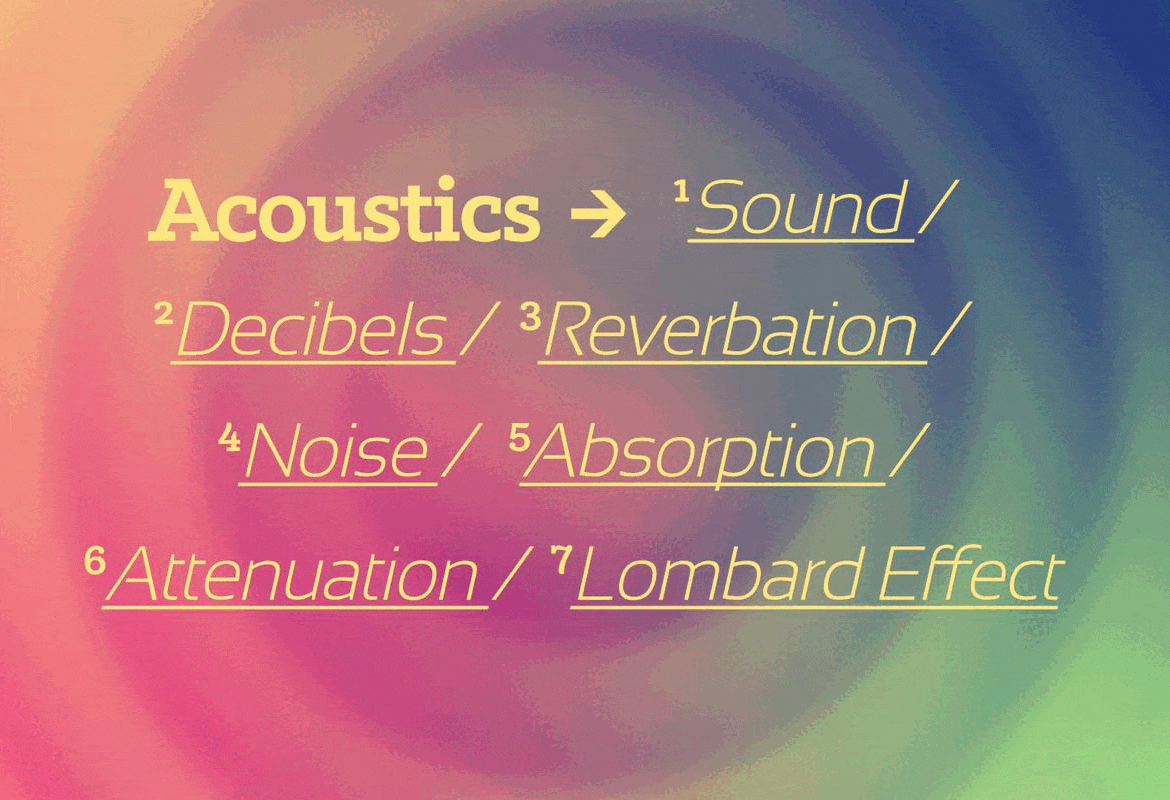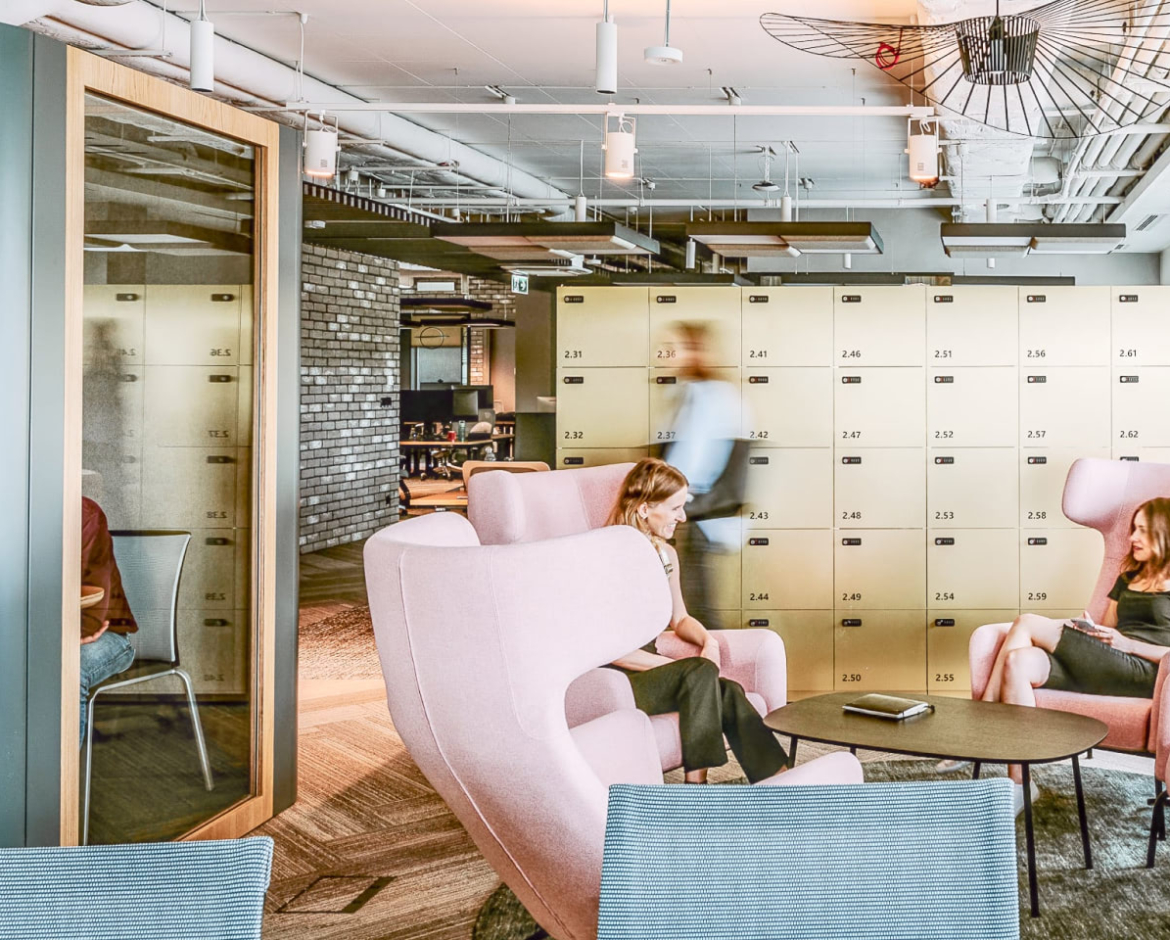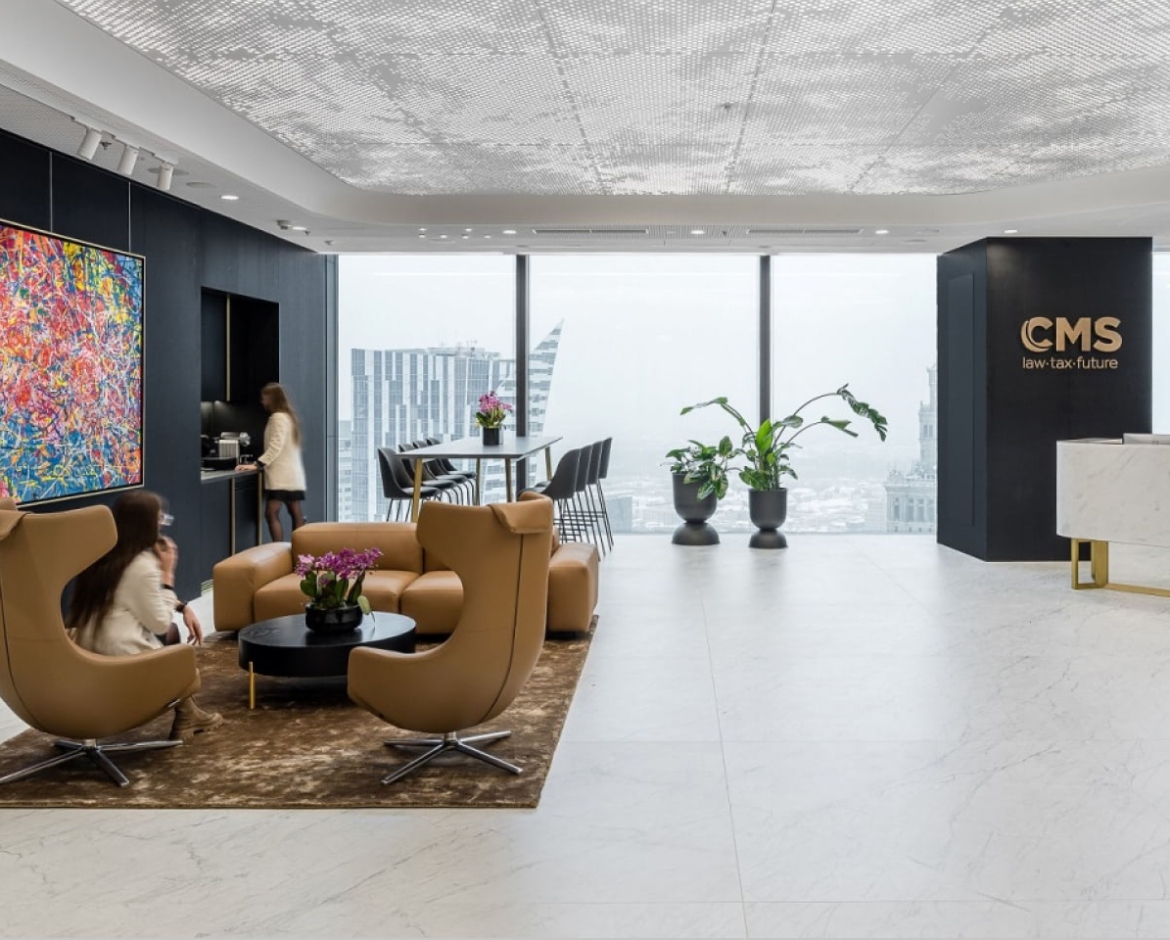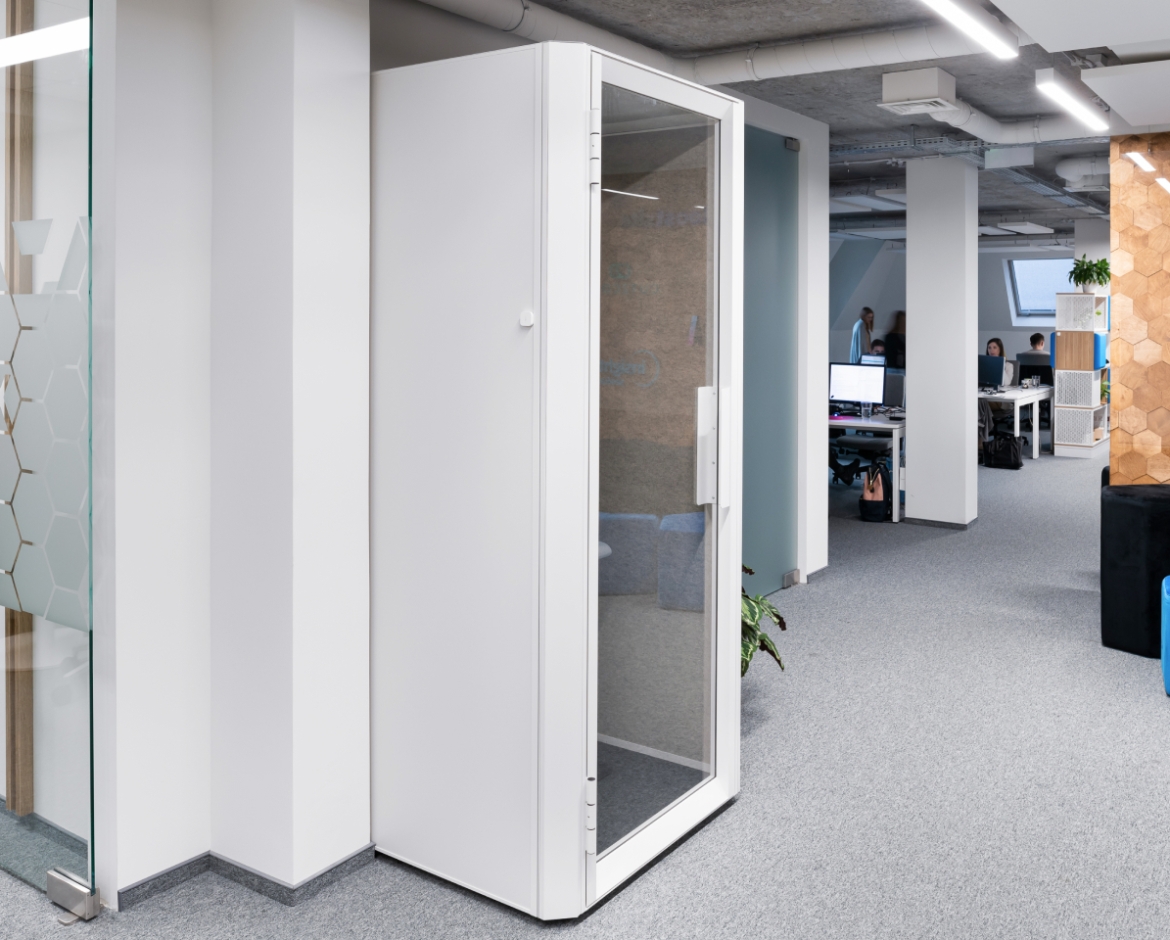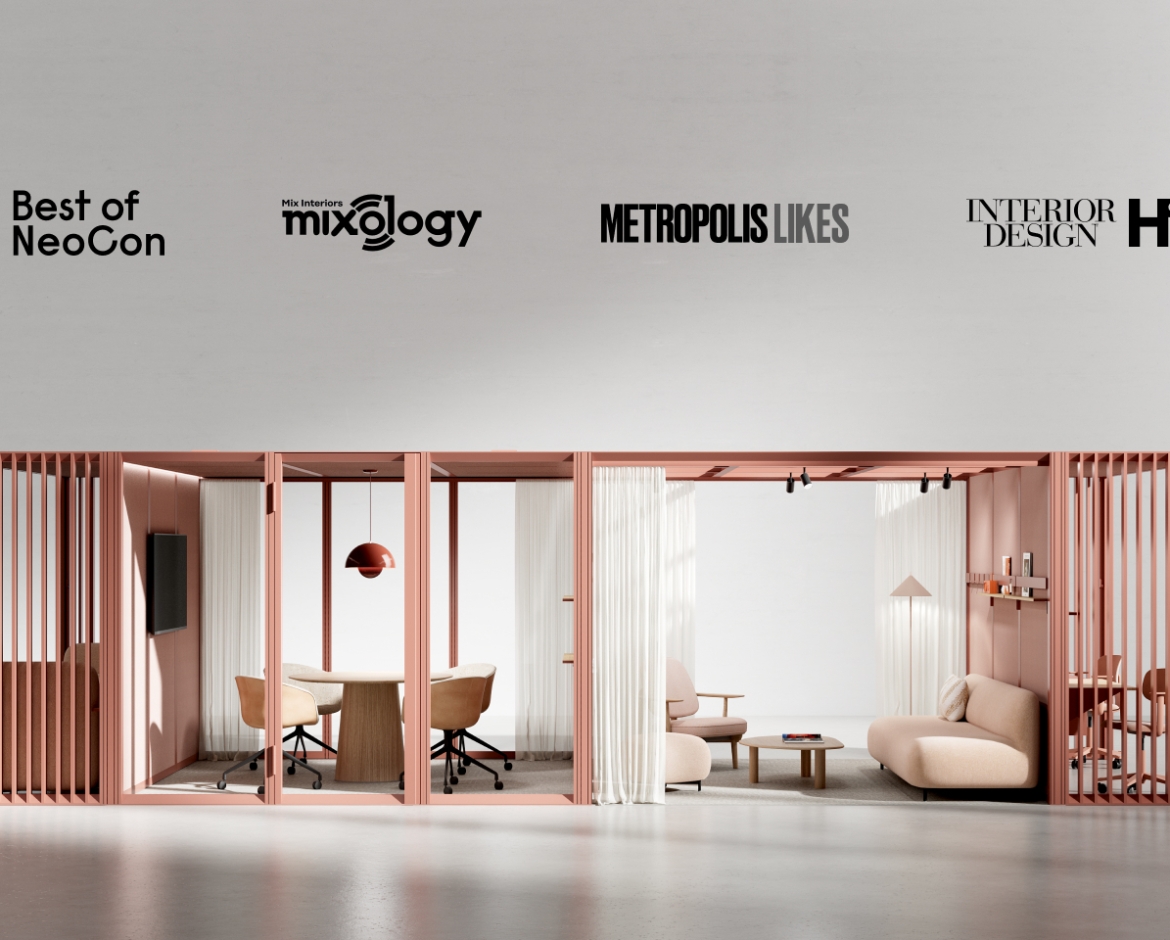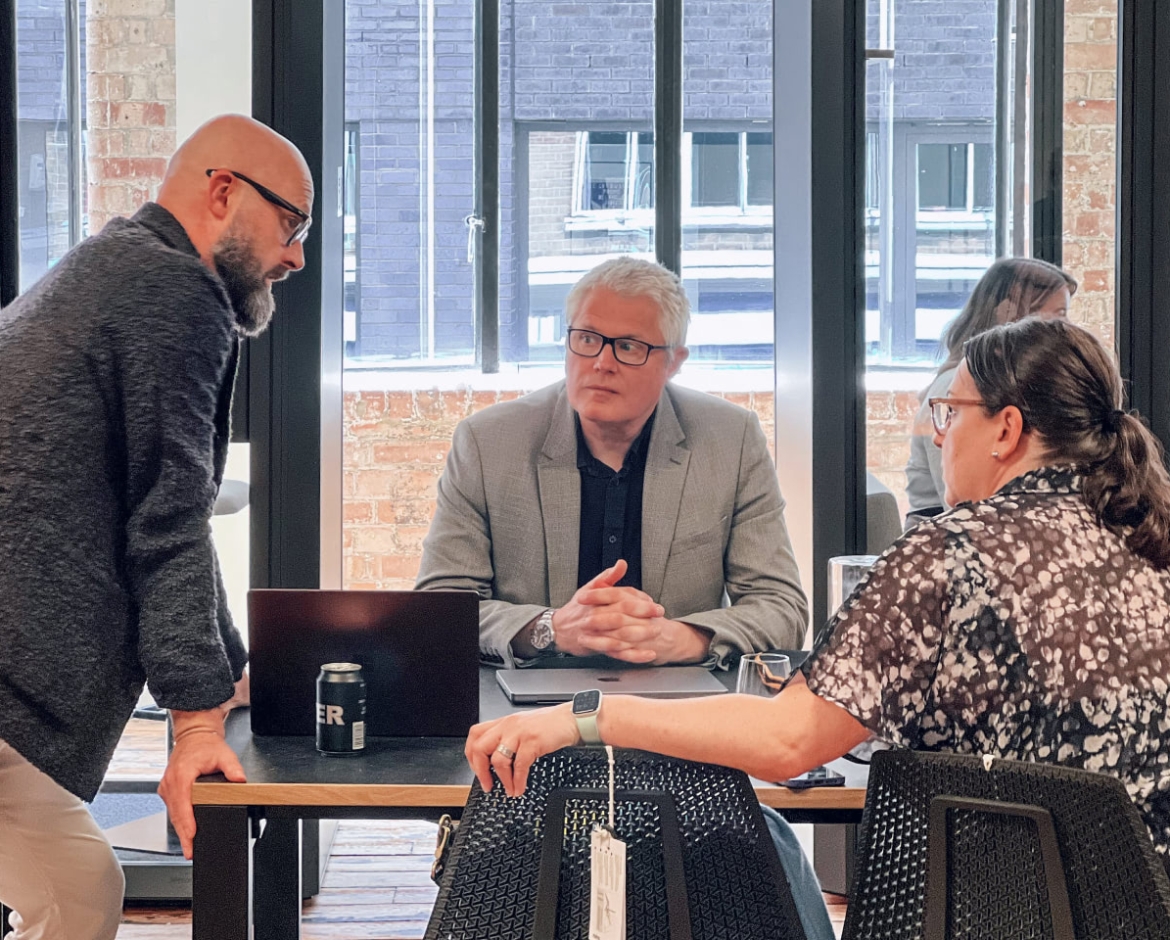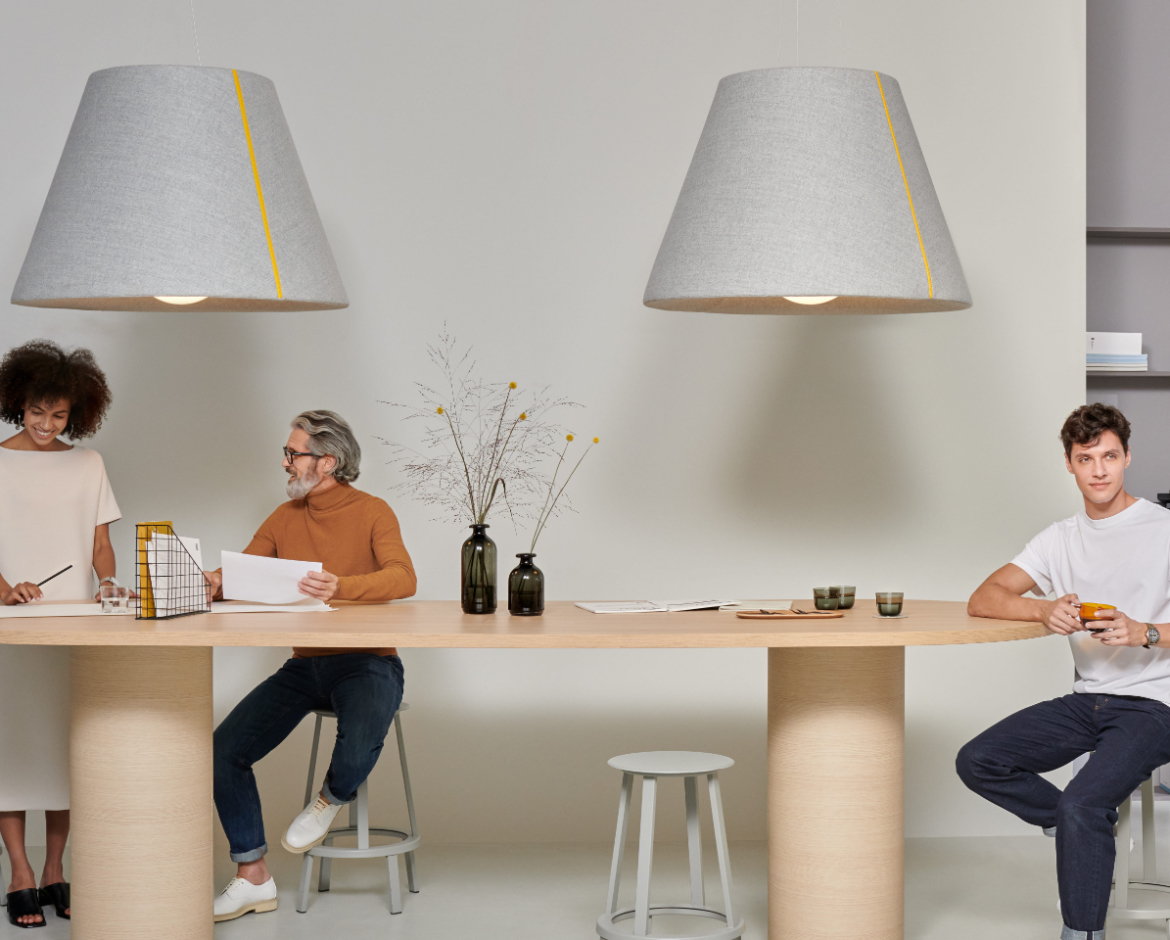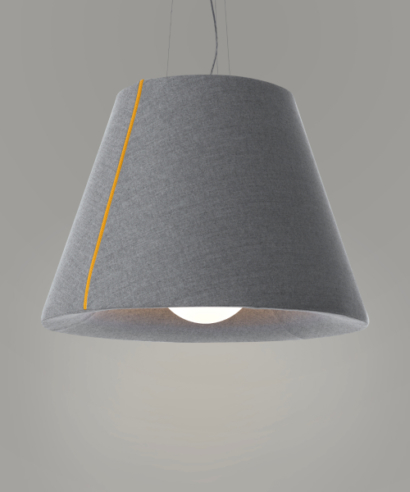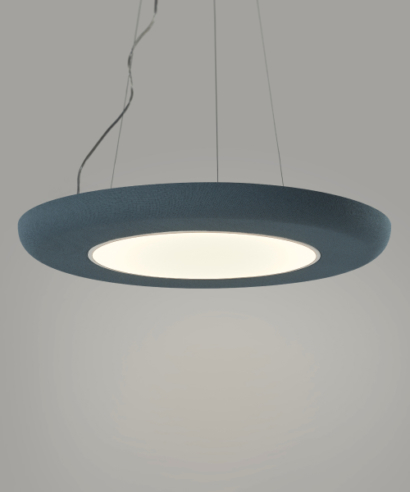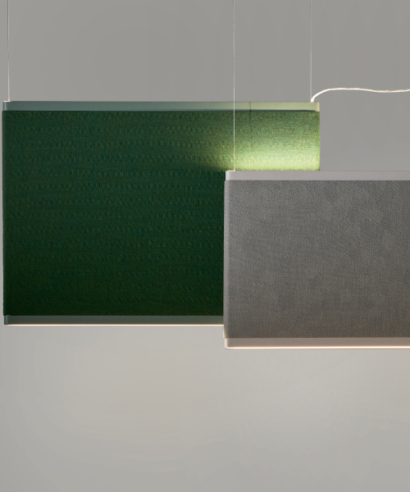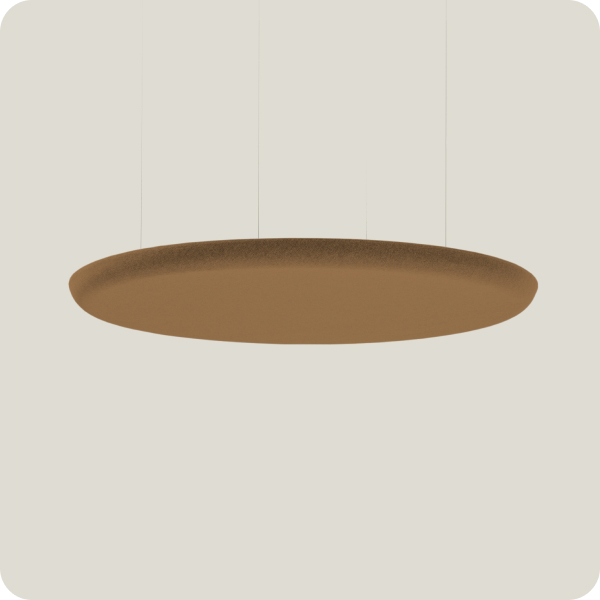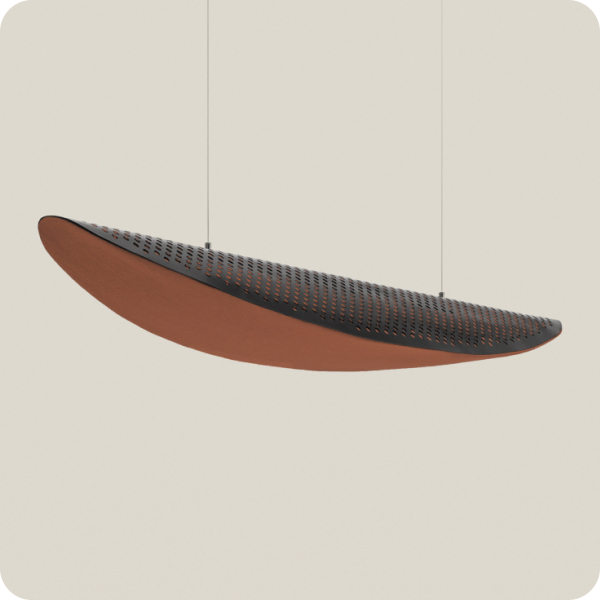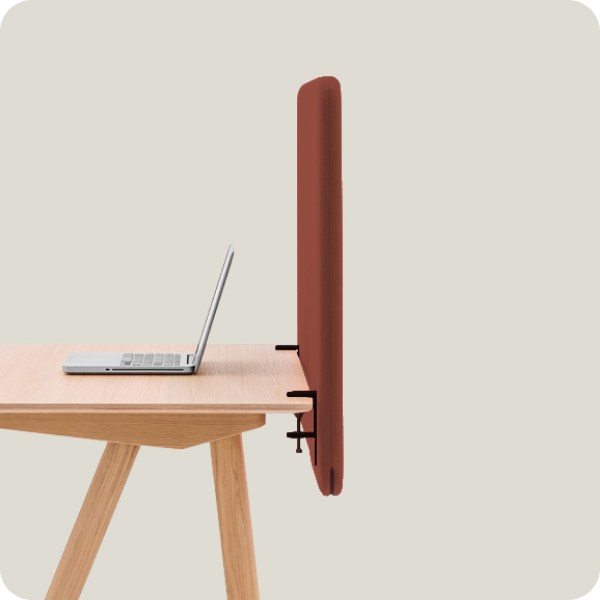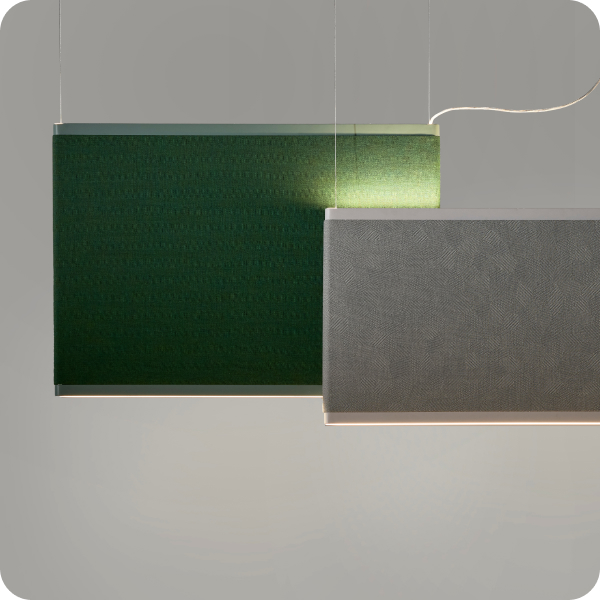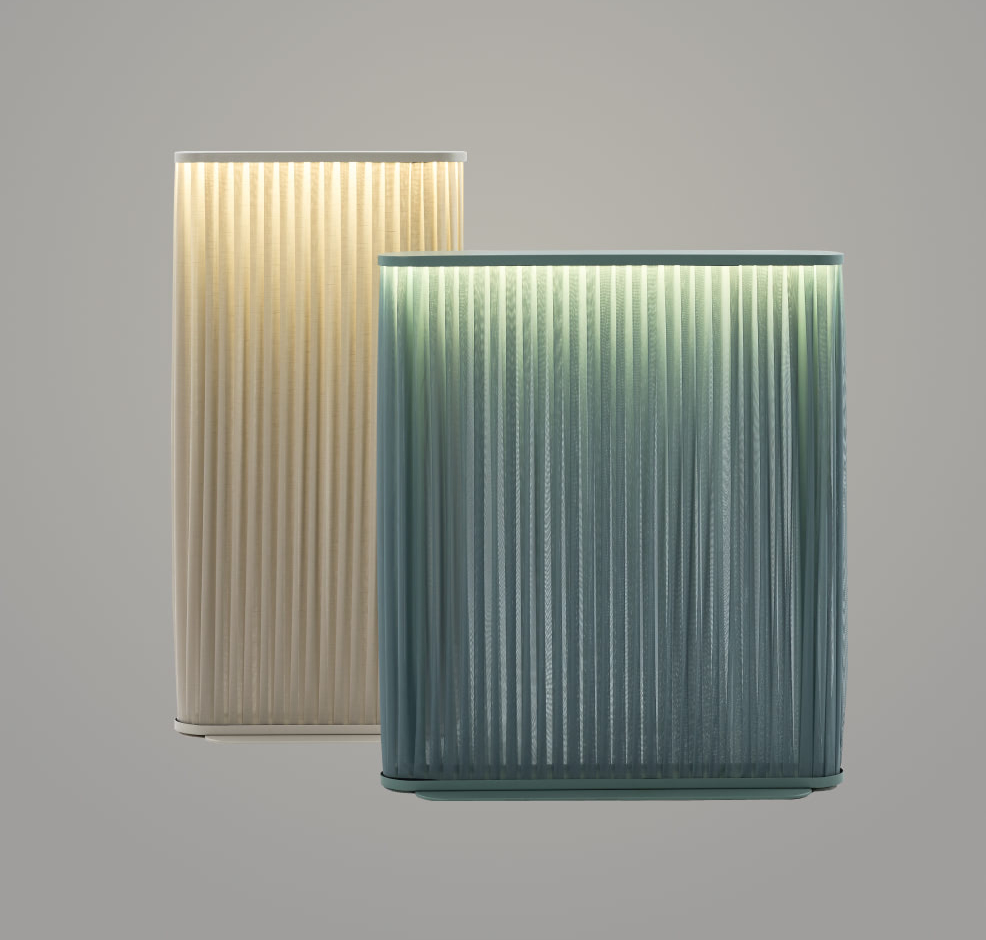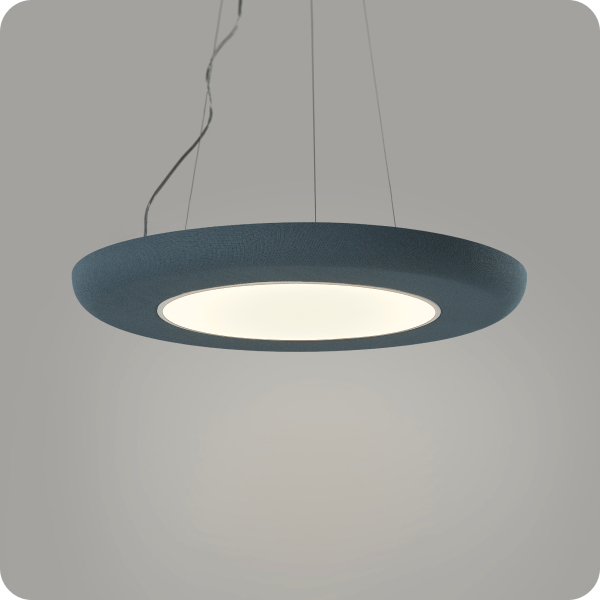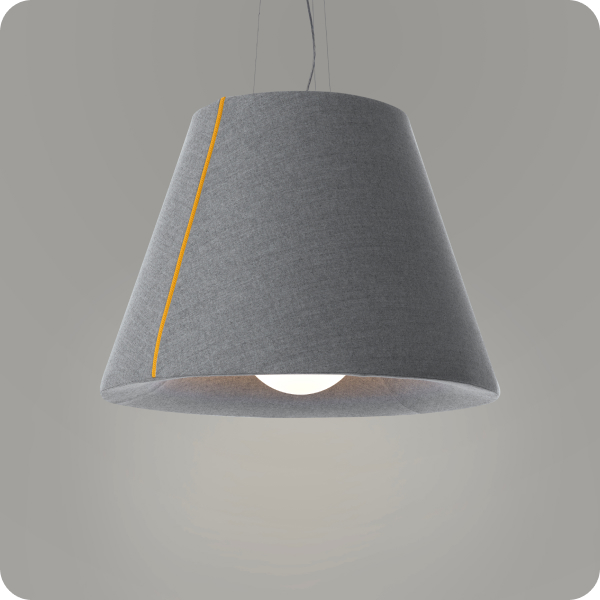Have you ever wondered what the difference is between sound frequency and sound level? Do you know what the Lombard effect is? If you don’t have a clue, don’t worry, because today we’re carrying on with our Jargon Buster series.
In the last article, we broke down lighting industry jargon. This time, we’re talking about six of the most common terms used in acoustics. As always, we promise to avoid the overly complex, scientific mumbo-jumbo. Let’s start!
Sound
What is sound itself? Sound is a variation in air pressure that ears can detect. A sound source (for example, your mouth while speaking) emits air pressure changes that travel as a sound wave at a speed of approximately 340 meters per second. When energy from the sound source reaches the eardrum, sensitive bones within it vibrate, and the auditory nerve signals to the brain that we’re hearing something.
Did you know?
Sound waves travel much faster in water than they do in air. Sound travels 4.3 times faster in water than it does in air of the same temperature. That’s why water animals, like dolphins, can communicate over such long distances (up to 10 kilometers).
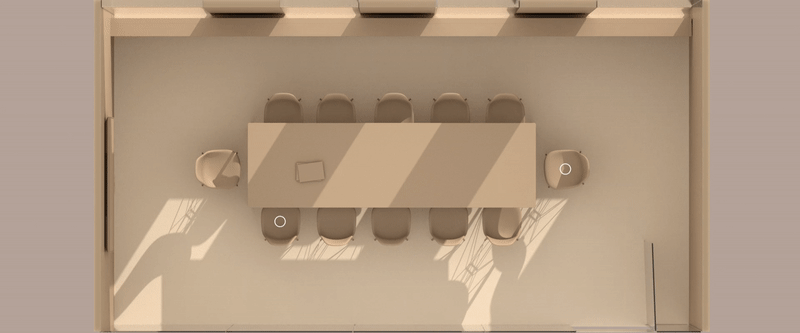
dB
dB, or decibel, is the unit of measurement for sound pressure. It refers to what we perceive as “loudness.” So, when acoustics professionals talk about how “loud” a room is, they are referring to its decibel level. What’s most important to know here is that sound pressure isn’t measured on a linear scale because an ear’s reaction to changes in sound energy is not linear.
For example, in very quiet surroundings, even a tiny change in sound pressure is noticeable and enables us to hear a change in loudness. In a very noisy space, on the other hand, we need to increase a sound’s energy level much more to detect the difference. That’s why a decibel scale is not linear; it better mirrors the function and characteristics of our ears. Here’s another example: to increase the sound level by 10dB—from 40dB (a small refrigerator) to 50db (an average conversation) — we need 10 times more sound energy. A 10dB increase corresponds to a doubling of loudness.
Did you know?
The term “decibel” is derived from the name of Alexander Graham Bell, the inventor of the telephone.
Reverberation Time
When a sound wave strikes a hard surface, like concrete or glass, it is reflected and gradually loses its energy. This results in an effect called reverberation. Reverberation time is the length of time that it takes for a sound to reach complete silence after its initiation.
In rooms with excessive reverberation, we often feel uncomfortable, especially during longer conversations. Give it a try. How does a 4-way conversation in a small bathroom sound after a while? You will quickly notice that the words you hear are unclear and seem too loud. That is because different sound waves mix together as they are reflected by the hard materials in the room. Sometimes, to be heard better, you instinctively raise your voice, but it only makes things worse.
To prevent that effect and to communicate more clearly, you can make sure that office spaces, like conference rooms and rooms dedicated to making video calls, have short reverberation times.
Did you know?
The optimal reverberation time depends on the intended use of a room. For a conference room, it is recommended to keep the reverberation time between 0.5 and 1.0 seconds. In open spaces, the reverberation time should be lower, between 0.4 and 0.6 seconds, because there are more potential sound sources. Keeping the reverberation time in a big conference room too low, however, can also lead to some acoustic problems. For example, those in the back of a room might struggle to hear a speaker at the front.

Noise
Noise is a general term to describe all unwanted, unnecessary or disruptive sounds, such as background chatter, alarms, telephone conversations, buzzing electronic devices and sounds from the street. Being in a noisy environment can reduce concentration, increase workplace risks and, in the long run, even create health problems.
Did you know?
The energy of an acoustic wave can be absorbed, reflected, or transmitted. The extent to which the energy is absorbed, reflected, or transmitted depends on the barrier’s material composition. Hard surfaces (like concrete or glass) reflect acoustic energy, whereas porous materials will absorb most of it. To reduce the noise level, you have to absorb as much sound energy as possible by using specially designed porous materials.
Sound Absorption
Sound absorption is the ability of a given material to partially block the energy of a sound wave and turn it into unnoticeable thermal energy. Sound absorption is used mostly in products dedicated to limiting the reverberation time inside a room. By placing sound absorbing materials on walls, ceilings or in corners you can make your room quieter and cozier.
Absorption is measured according to the ISO 354 norm and expressed as the sound absorption coefficient αw, with a value between 0 (total reflection) and 1 (total absorption), and corresponding classes A–E. Class A represents the highest quality and E, the lowest:
Did you know?
Five of our products have Class A sound absorption properties, which means these products offer top-quality sound absorption that effectively reduces reverberations that could cause distraction:
→ Tower
→ Blocks
→ Puzzle
→ Canvas
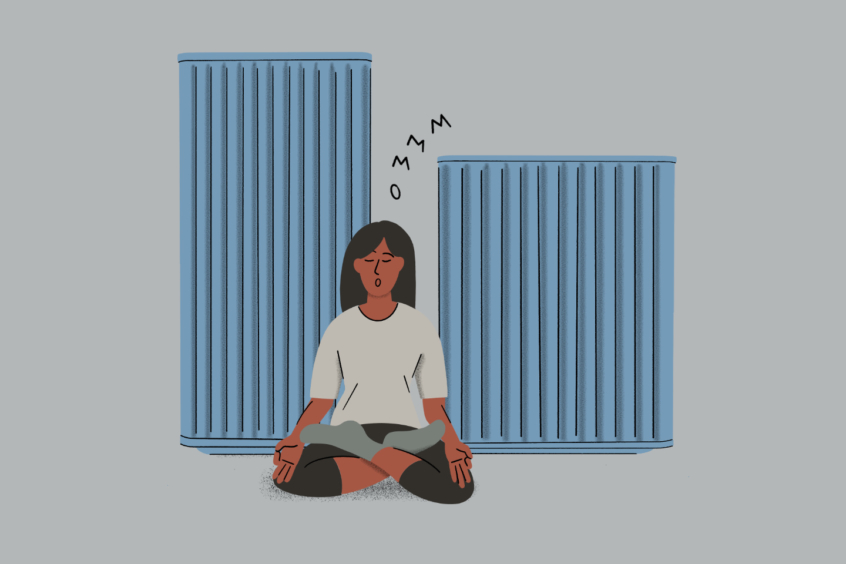
Sound Attenuation
To put it simply, sound attenuation describes a reduction in sound volume. A product that supports sound attenuation, therefore, helps reduce the energy of a sound wave as it travels through a particular space (for example, the voice of a chatty colleague from another department in your open-plan office). The rule is simple: the more you reduce the sound in different parts of the space, the more (acoustically) comfortable the space is. This comfort supports productivity because it can reduce noise and distraction. Acoustic products like walls and partitions provide high-quality sound attenuation. Instead of absorbing sound, they capture it, acting as acoustic barriers between different areas of the room.
Did you know?
We offer a wide range of products that support sound attenuation:
→ Cone
→ Booth
→ Duo
→ Wall
Lombard Effect
The Lombard effect describes our tendency to increase the volume of our voice in a loud environment. We do so because we think that we will become more audible to others. What’s interesting is that the change occurs in both loudness and other acoustic features like pitch rate and syllable duration.
Did you know?
Research on birds and monkeys has demonstrated that the effect also occurs in the animal kingdom.
Now that you know the acoustics essentials find out how to improve office acoustics with these Mute products. Or check out our article, “Well-Being Boosters: 4 Reasons to Improve the Acoustics in Your Office”, to see how acoustic solutions can influence your team’s well-being and productivity.
You might also like
Tired eyes, a cracked psyche, mood swings, headaches - these can all be effects of the wrong lighting.
The lighting of a room influences us in our work and concentration and has a decisive effect on our productivity and well-being. Tired eyes and headaches can be consequences of wrong lighting in a room.
The right light, therefore, has a big impact on a pleasant working atmosphere. So while designing an office, thinking beyond desks and technical equipment is required. We will tell you how companies and organizations can ensure the right light environment in their offices.
The Effect of Daylight and the Right Desk Set-up on Our Health
There is no denying that daylight is important to our productivity and the efficiency of our work. But it's not just professionally crucial to work in the right setting - our health will thank us for it too. Tired eyes, a cracked psyche, mood swings, headaches - these can all be effects of the wrong lighting. As Philips makes clear in a report, sunlight and natural light, in particular, have an impact on our well-being and work performance. To support employees in their work, companies need to create a pleasant lighting atmosphere in the office.
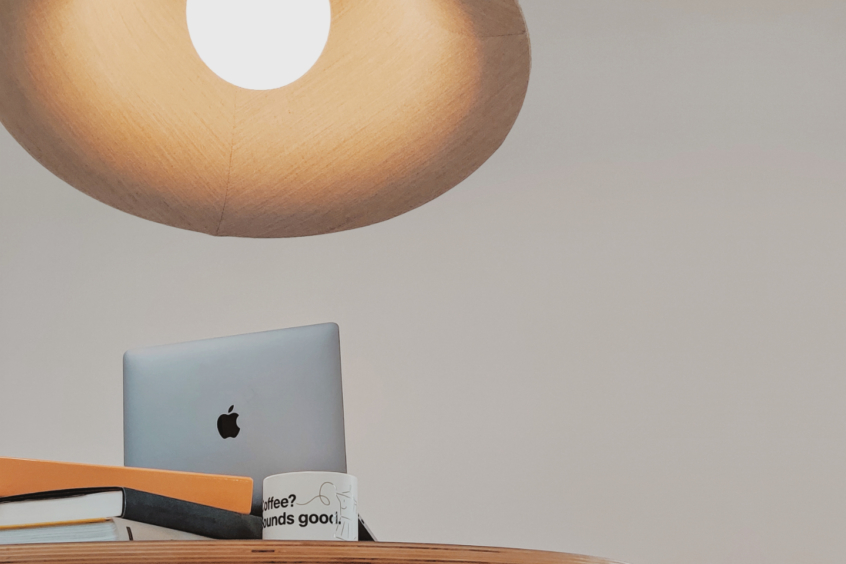
Bell with GOLF LED creates warm ambient lighting
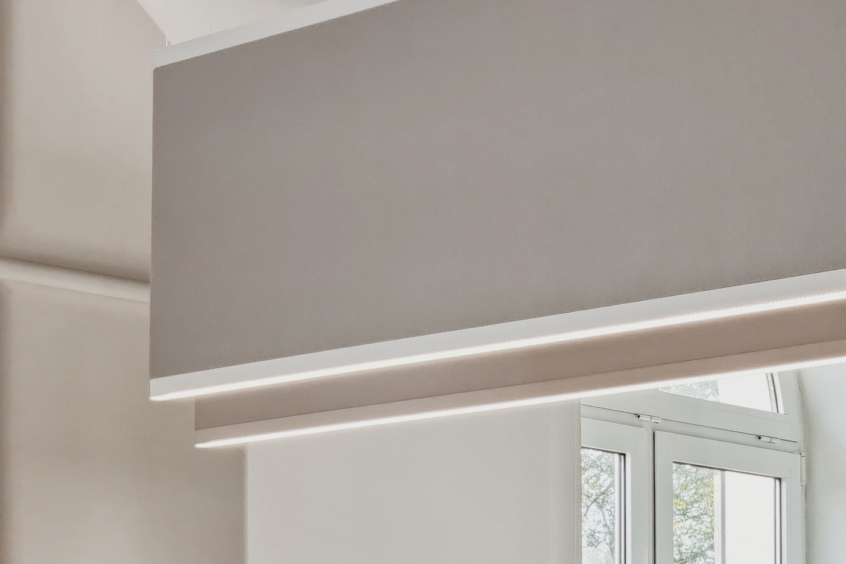
Line with double LEDs emits bright beam
Different Types of Lighting to Create a Perfect Environment
Different types of lightning can support employees in the way they work and help companies to provide an atmosphere that will contribute to their well-being at the workplace.
Task Lighting vs. Ambient Lighting
Ambient lighting is the general lighting of a room. It substitutes as natural light and provides the overall illumination of a room. Chandeliers, ceiling lights, and even wall lights that lighten up more than on spot create an even lighting level and a relaxing environment in offices and public areas like restaurants, receptions and hotel lobbies.
The use of task lighting is already included in its name as it is light at a specific spot that is used to be able to do certain tasks like writing or reading. This type of light helps to stimulate our brain and supports us when we have to concentrate and focus. Therefore, light sources like pendant lamps above desk areas, desk lamps and swing arm lamps, fall under the category of task lighting. They are great solutions for work stations, conference rooms and open-plan offices.
Lighting levels
While designing spaces, companies need to ensure the necessary illumination levels for each possible area. To do so, they have to consider "Lux" and "Lumens". Lumen is the total amount of light emitted in all directions from the source. Lux is a measure of illuminance - a total amount of light that falls on a Surface. The same lamp will deliver different amounts of luxes depending on how high it is hung. At the same time different areas require different numbers of luxes. Workstations and meeting rooms need to ensure 500 lux, and reception desks need 300 lux. Entrance halls, on the other hand, only need 100 lux.
Light Colour 3K or 4K
LED lamps and luminaires are available in several colour temperatures. Lamp colour is often a personal choice that is made depending on the environment that should be created. However, most common in office and public spaces are 3000k and 4000k lights. 4000k is a cooler and whiter light that helps to keep people focused. It is mainly used for task lighting. 3000k light, on the other hand, brings a warmer light to a room but may make people a little sleepy after working in this light for a few hours.
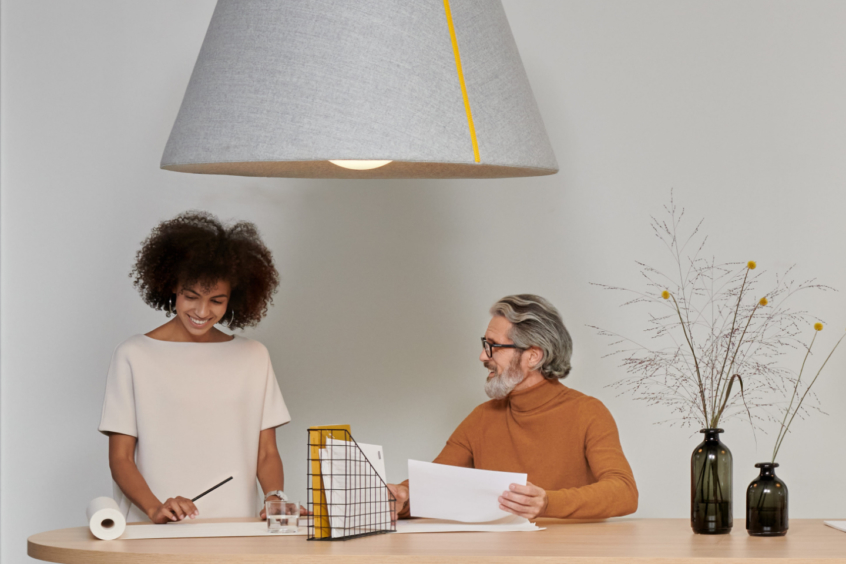
Added Options For an Even Better Light Set-up
Additional functions of lightning can provide even more comfort. Very bright light can be dimmed thanks to a Dali dimmer. That way, you can enjoy a little break or adjust the light according to the room and the setting. The microprism diffuser provides a high level of visual comfort. It is ideal for lighting workplaces with its special prismatic structure, as it has low glare due to its special design. With it you can ensure perfect lighting conditions, especially in the workplace.
The right lighting is essential in modern offices. Therefore, you should focus on designing an environment that supports creativity and productivity and increases everyone's well-being. The right lighting solutions not only bring comfort and a pleasant atmosphere but are also flexible and smart and can be adjusted to individual needs easily.


